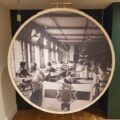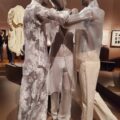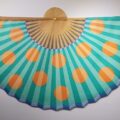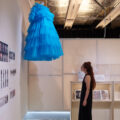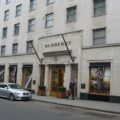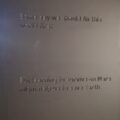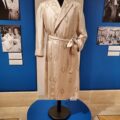Diva Review – Diva at the V&A – a star-studded show!
November 5, 2023Diva review. This is a show all about the star power of exceptional women. It features the costumes of some of the most famous film actors and singers in the world, alongside a thoughtful commentary about what a diva is.
What a treat – what an immense treat – for costume historians and fans of early cinema. Here are original outfits worn by Ellen Terry, Sarah Bernhardt, Theda Bara, Mary Pickford, Caroline Lombard, and Clara Bow. It progresses through film history, with Joan Crawford, Bette Davis, Judy Garland, Marlon Monroe, Mae West, Elizabeth Taylor, and Vivienne Leigh. They are all iconic costumes from iconic scenes in movies, accompanied by posters, magazines, illustrations and portraits and expertly selected clips of the actor in the film concerned.
When Garbo, in “Grand Hotel”, murmurs “I want to be left alone”, the whole group of bystanders standing with me recites it too. A screen nearby has Marilyn Monroe simultaneously wiggling her way through “Some Like it Hot”. And that’s just the first room! The exhibition moves on to opera stars, and the upstairs is devoted to singers.
Diva Review – Iconic Clothing
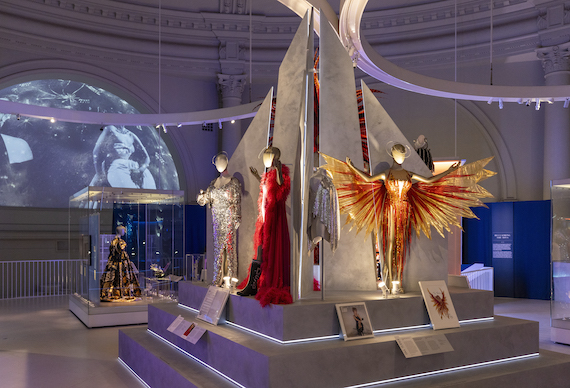
Installation image of DIVA at the Victoria and Albert Museum, London (c) Victoria and Albert Museum, London
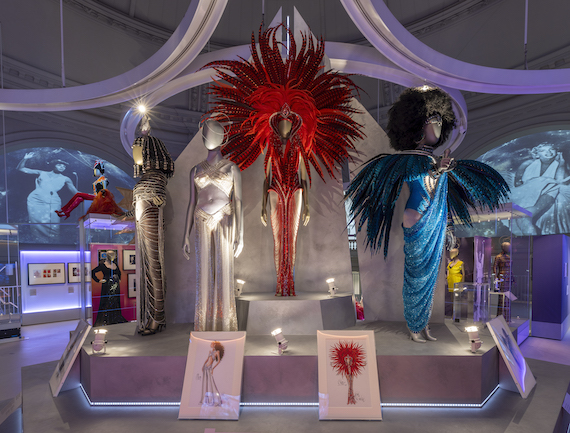
Upstairs installation image of DIVA at the Victoria and Albert Museum, London (c) Victoria and Albert Museum, London
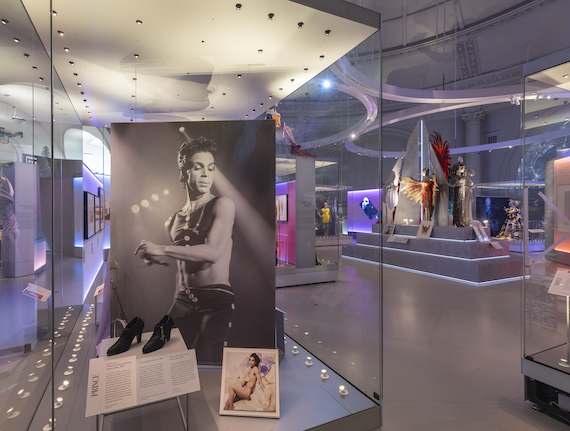
Prince’s little shoes: installation image of DIVA at the Victoria and Albert Museum, London (c) Victoria and Albert Museum, London
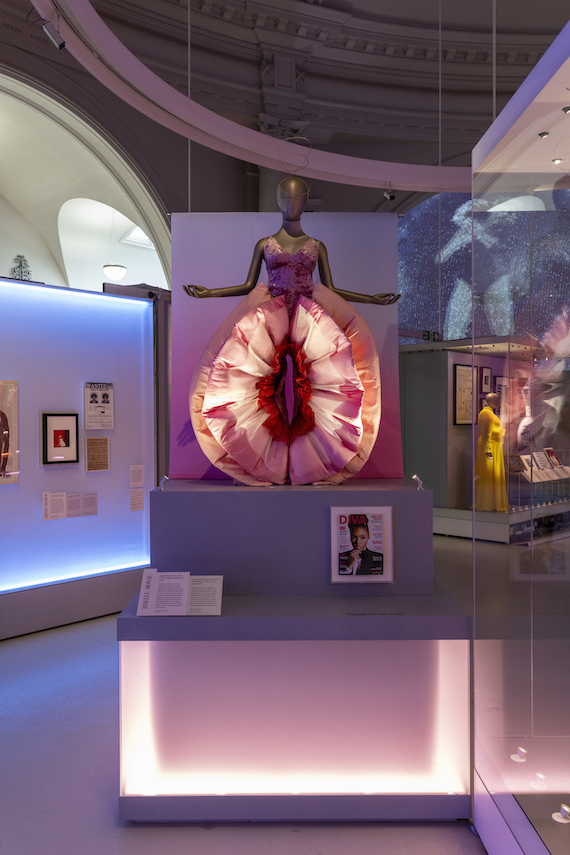
Diva Review. Janelle Monae’s costume. Installation image of DIVA at the Victoria and Albert Museum, London (c) Victoria and Albert Museum, London
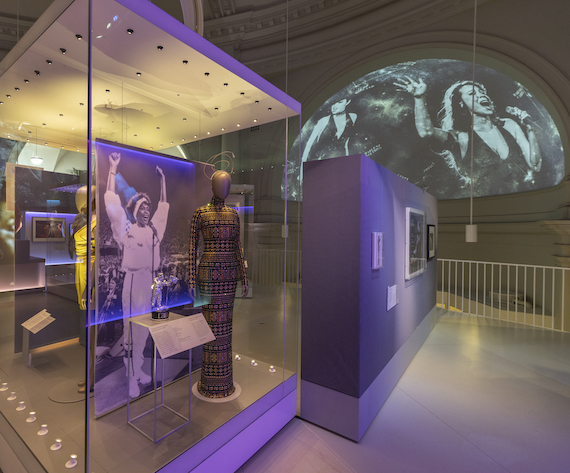
Installation image of DIVA at the Victoria and Albert Museum, London (c) Victoria and Albert Museum, London
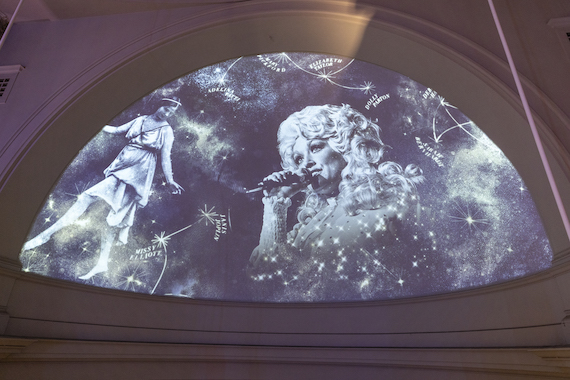
The Stars. Installation image of DIVA at the Victoria and Albert Museum, London (c) Victoria and Albert Museum, London
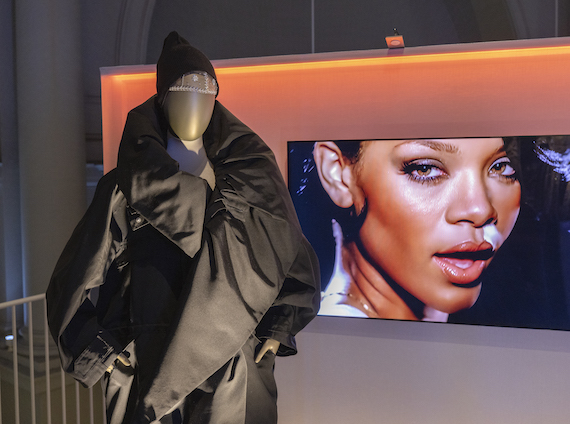
Rihanna. Installation image of DIVA at the Victoria and Albert Museum, London (c) Victoria and Albert Museum, London
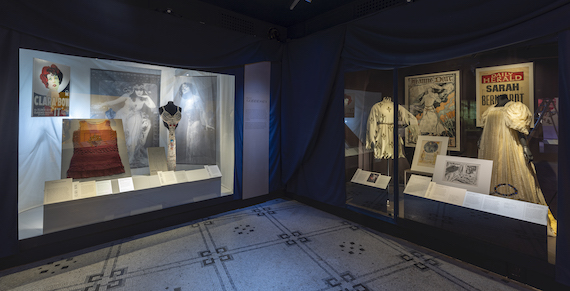
Early cinema. Installation image of DIVA at the Victoria and Albert Museum, London (c) Victoria and Albert Museum, London
Diva Review – the costumes of Clara Bow and Theda Bara
The downstairs of the temporary fashion galleries at the V&A is dark and close – very good for fragile items such as Clara Bow’s dress, a knee-length red chiffon creation by Travis Banton for the film “The Wild Party”, which was released in 1929. It’s almost a hundred years old! I can’t describe what a thrill it gives me to see the dress of such a star. It’s maybe even more exciting to view part of the costume which Theda Bara wore for “Cleopatra”. It’s a beaded chest piece, like a bra made of faux pearls, with a long silver lamé extension decorated in beading. Although, in 1917, when the film was released, bras did not really exist.
This extremely risqué costume, along with Bara’s performance, was a shock to me when I first encountered it. It’s very hard to square with the average clothes of the Edwardian era, which consist of ankle length skirts, tight corsets and high necked blouses. Early cinema was very inventive, very creative, and had very good storylines for women. As well as acting, they worked behind the camera in multiple roles, because film making was a small business, newly minted, and often everyone just kind of pitched in.
The Hays Code Changed Everything
Later on, the Hayes Code which came into force in 1934 changed everything. It was a set of rules that defined what could, and could not, be depicted in film. Costumes were censured – bellybuttons, for instance, became forbidden. As well as this, women could not have a good time and get away with it. If they drank, took drugs, had sex or partied too hard, they had to have a terrible downfall at the end. As well as this, no homosexual characters could be shown. It ended in 1968, and that’s why films made before and after this seem so startlingly modern.
Diva Review – Meaningful Collaborations
Upstairs in the exhibition, all is light and air as some more incredible costumes are shown. It will equally be a treat for a fan of just about any contemporary singer. You might go and choose whoever is your favourite, in order to spend some quality time with their outfits. Because even if you attend gigs, you will never see them like this. The performers are far away, and if you elbow your way to the front, you still may not see them.
I swooned over a massive Björk dress, worn for the cover of an album and photographed by Nick Knight. I was terribly disappointed when I saw Bjork live a couple of years ago that she retreated into a tiny hut onstage to sing and NOBODY could see her. But here, as well as an opulent gown which was half 18th century Court dress, half kimono I could see her incredible shoes, carved from birch wood. Her masks, some shaped from a single piece of sheet metal, were on the wall. Each part is meaningful, and she has clearly enjoyed the collaboration.
Rihanna gets a big showcase, and you can also see costumes from Janelle Monae, Barbra Streisand, Shirley Bassey, Edith Piaf, Lady Gaga and Annie Lennox.
Power and Talent
The exhibition celebrates these women, and portrays their power and talent from a feminist point of view. “Diva” is a slightly derogatory word, tinged with scorn and an implication that a woman thus named is powerful and talented but know it, and is difficult, demanding, unreasonable. Yet must be bowed to, as she is the star of the show. But this exhibition celebrates the star part, and returns the Divas to their original Italian pedestals: “Goddesses”.
As part of the exhibition design, every single person is handed headphones on entry. The sound clips are triggered as you move near. This helps prevent audio from overlapping and you can set the volume as you prefer, which is nice. Although they sometimes accidentally slip between songs disconcertingly and occasionally get stuck, my sound track insisting on Janis Joplin while I gazed at a a photo of Annie Lennox.
The text refers to “divas of all genders”. But it would be unfair to take this away from women and it is female artists who are mainly represented – with a few notable exceptions. These are Freddy Mercury, obviously, lil Nas X, Prince and Elton John, of course. Transgender Divas include Sophie and Arca.
Diva Review – Interesting Discussions
The exhibition concentrates largely on stars of the Western world, mainly very recognisable. I think I saw one reference to a Bollywood star. It’s not a show aiming to introduce new names or educate us particularly. I think the discussion around the term Diva and the information on how these stars have fought to retain creative control, or personal freedom, or racial justice are interesting and thought provoking. There is not a negative word against any of the people featured at all.
But the main reason to go to see this show is to go and see the costumes of stars. Whoever is your favourite, the talent and artistry on display are unmatched.
Diva at the V&A Museum is on until the 7th April 2024.





